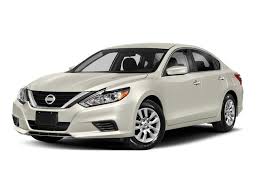A Valve Actuator: Key Information to Know About This Equipment
A valve actuator is a device that opens or closes a valve. It works with the valve pilot and body. It can be operated with a source of power such as compressed air, electricity, or the flow of oil. However, some are operated manually. This is the critical information you need to know about a valve actuator.
Types of Actuators
There are many types of valve actuators, and they are divided according to either their movement or the type of power that is applied to them. They include:
Manual actuators
These operate manually using gears, levers, or wheels in movement. They differ from automatic actuators since the automatic ones have an external source of power that provides the force and motion required to operate a valve remotely. However, manual actuators are dangerous for operating valves in toxic environments.
Electric actuators multi-turn
This type is powered by 3 phases or a single electric motor. The electric actuators multi-turn is common and can operate large valves.
Electric actuator quarter-turn These are used in smaller valves, and a technician can attach a backup power supply to them,
such as a battery because they require low power.
Fluid power multi-turn
This one is best, especially where there is a shortage of electricity. The pneumatic and hydraulic actuators are mostly used to operate a linear type valve, for instance, a gate valve.
Fluid power quarter- turn
This type comes in both small and large actuators. They are also used mostly where electricity is not readily available. Besides, they are reliable and straightforward.
Functions of the Actuator
Valve actuators perform many functions such as providing the right speed of operation, declaring a failure mode in case the system fails, holding the closure member of the valve in position, and moving the closure member of the valve to the right location.
Selecting an Actuator: Which Factors Do You Need to Consider?
When choosing a valve actuator, you need to weigh these essential factions. They include:
Compatibility
A valve actuator operates the valve. Thus, for instance, in areas with power supply issues, you can buy hydraulic or pneumatic actuators instead of the electric one.
Area of operation
Pneumatic actuators are explosion-proof; hence, the best work in toxic environments that have compressed air.
The speed of an actuator
High operations will require actuators with high power. For example, pneumatic actuators are easy to control their speed. A technician can control the speed by fitting it with a needle valve.
For an electric actuator, it isn’t easy to control its speed since it has geared motors. However, whenever necessary, you can add a circuit to slow the operation.
Safety
Safety is paramount when choosing a valve actuator. Thus, it is best to settle for the most reliable and safest option. For instance, in case of a fire break- out, an actuator should stay in the fail-safe position.
Furthermore, in hazardous environments, applying the National electric manufacturers association guidelines will help with safety by putting specific precautionary measures for different actuators.
The cost
An actuator that requires high force will also need more operating power. Hence such an actuator is a bit pricey. Besides, you may need to incorporate additional safety requirements meaning higher cost, but such a device will be durable and reliable in the long run.
Valve actuators are essential since they contribute to the performance of a valve. Thus, a technician has to know the various types available, its functions, and the key factors to consider when selecting one.
